For many years I’ve bought and sold vintage Mercedes convertibles; the W113 SL models that ran from 1963 through 1971. These are known as the “Pagoda” series, owing to the concave rooflines of their removable hardtops. Twenty years ago they were undervalued, and with not a lot of competition for them I’d be able to cherry pick some pretty fantastic ones. I’m talking one-owner cars with low miles, original paint and every service record from new. I’d step up and pay between $30K to $40K for those amazing examples, which today would ignite furious bidding battles well into the six figures. Back then, I even sold a couple of my finds to the Mercedes Classic Center in California. They would then fine tune my cars using factory parts and ship them back to Europe, where they probably sold them for double the price to their private clients.
Today, those kind of finds are gone and Pagodas are in high market demand.
The rarest (and most valuable) of the bunch were the ones optioned with a five-speed manual transmission. Out of the nearly 30 Pagodas that I’ve sold, I’ve only had two with this rare option, and incredibly, I happened to have both of them at the same time. But even crazier? They were both DB180 Silver Gray with black leather. That will never happen again.
In 2006 I got the itch to go and find one for myself, a keeper. No, I wasn’t going to spend $30K, but by then had accumulated enough parts and knowledge to go looking for a project car. I put out a wanted ad on Craigslist, and after two years of renewing it every month I finally got a bite. The car was just up the highway from me and I had to chuckle when the owner uttered the classic phrase: It ran when parked.
What I found was a forlorn Mercedes coated in bright green Oregon mildew. But there was potential. It wasn’t rusty, and was actually a desirable Euro-spec example with their distinctive fishbowl headlights. The rare, amber-colored reverse lights told me that the car was initially delivered to France, and sure enough, in the trunk I found its original French license plates. I looked the car over carefully. It was complete, it was solid, it was $3,000. I had found my Pagoda.
My first task was to get it running, and after a couple of days spent going through the basics I got a real thrill when the car fired up and started shooting out rust flakes from the tail pipes. It was alive! I dialed in the motor a little further and got it running really well, so well that I had confidence that I could actually start driving it. Cosmetically it still looked like a mess, but then I had an Aha! moment. Why not drive it just like this?
I took a razor blade to the grime on the windshield and went out for a drive in the neighborhood. Wow, this is actually perfect. After all of the show-quality Pagodas that I had sold, I was actually enjoying parading around in one that looked like it had been dredged from a lake. I went ahead and removed the bumpers and hubcaps to give it a stripped-down look, which further transformed what was a formerly bourgeois car into one that was unapologetically ragged. I loved that.
That summer was fun. I’d take the car everywhere; running errands, going downtown - for me it was like the ultimate practical joke. But as the summer turned to winter, the novelty of it started to wear off. I got to thinking that this car deserves better. With its strong mechanicals and solid body, how hard would it be just to restore it? Well…..
I started taking the car apart, really apart. If I was going to do this job I was going to do it right. These cars were carefully assembled by masters of their craft, so the least I could do was try to approximate that. Problem was, I wasn’t a master of the craft. But I gave it a shot anyway. The disassembly was actually pretty straightforward, but soon I found that I was running out of room. They say when you do a restoration, set aside enough space for 5X the dimensions of the car itself. It was true, I was surrounded by parts, and each one had to be bagged and tagged after photographing where it went on the car. I knew for sure that I wasn’t going to be able to trust my memory on how everything went back together.
After I gutted the car down to its shell, I had it chemically dipped and then brought it over to a guy I know who happens to be the best painter in Portland. I chose a 50’s Mercedes factory color that I had always liked: DB171 Stone Gray. It wasn’t a standard Pagoda color but it should have been. My shop neighbor at the time ran a top-notch auto upholstery shop, and he took care of doing the seats and replacement soft top. The remainder of it I struggled with myself. It was hard. There were hundreds of small details that I was already familiar with, but executing on them was a different matter altogether.
Two years later I was pretty satisfied with the result, but something had been lost. What I now had in front of me was a show-quality car, one that I was afraid to drive. On top of it all, my receipts now totaled that $30K number that I was sure I wasn’t going to spend on a Pagoda. So, on the block it went.
The car sold to a gent in England, and over the years he’s been kind enough to email me some pictures of him out enjoying the car. I don’t have any regrets; I got to enjoy the car myself and I definitely doubled up on my knowledge about them. Many years later I decided to put together a multi-part YouTube series on Pagodas, a buyer’s guide of sorts.
I created the series as a warning. With their high prices and now universal appeal, these Pagodas can trap unexperienced buyers into paying a lot for a bad example. In my videos I point out the multitude of details that offer important clues on what to look for. In today’s marketplace, I’ve seen a lot of bright and shiny examples that are actually pretty bad cars, whereas some tired-looking ones can be better buys based on the small details that are still present. On these cars, details really matter.
But in the end, my advice always remains the same, whether you’re wanting to buy a Pagoda or any other collector car: buy the one that’s already sorted out. Project cars can be appealing in price, but there are lots of other costs you need to account for. These include not just your time and energy, but your mental health as well. If you truly enjoy the process of resurrecting vintage cars - that’s great. But if not, buy the car that’s already done. You’ll be out there enjoying the drive instead of looking at a pile of parts that’s growing in step with your stress levels.

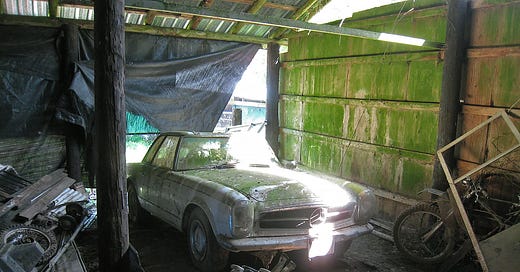



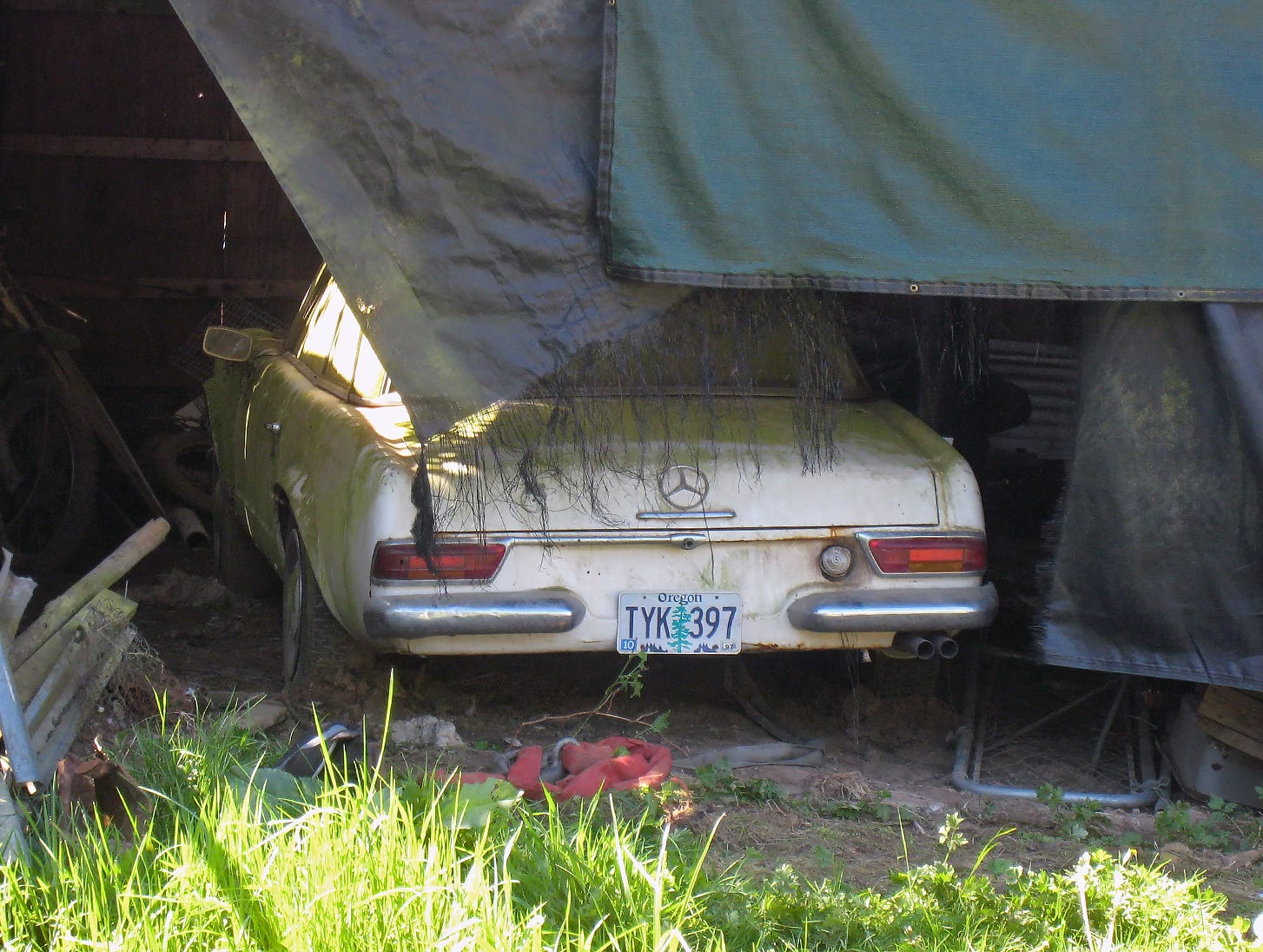
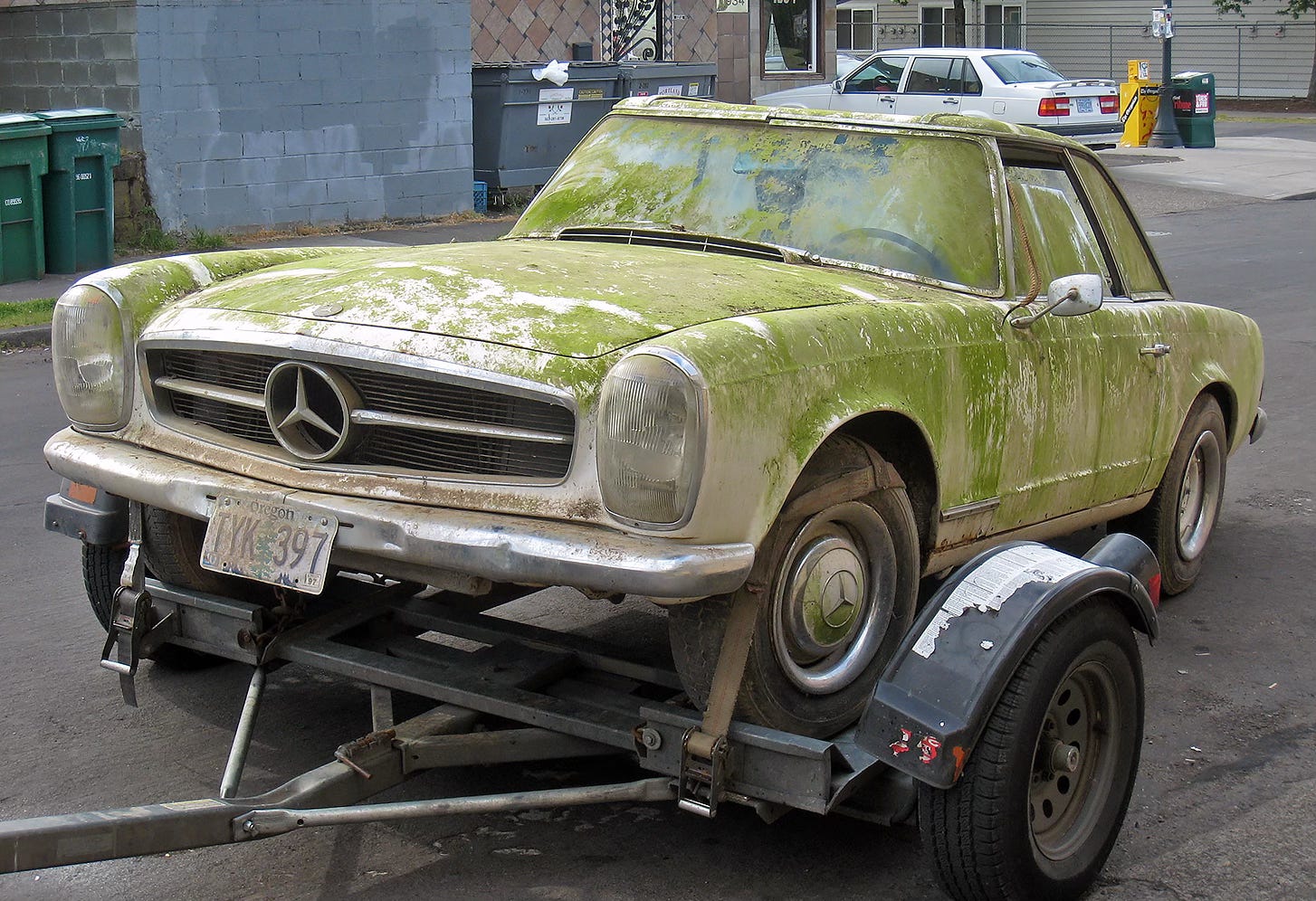
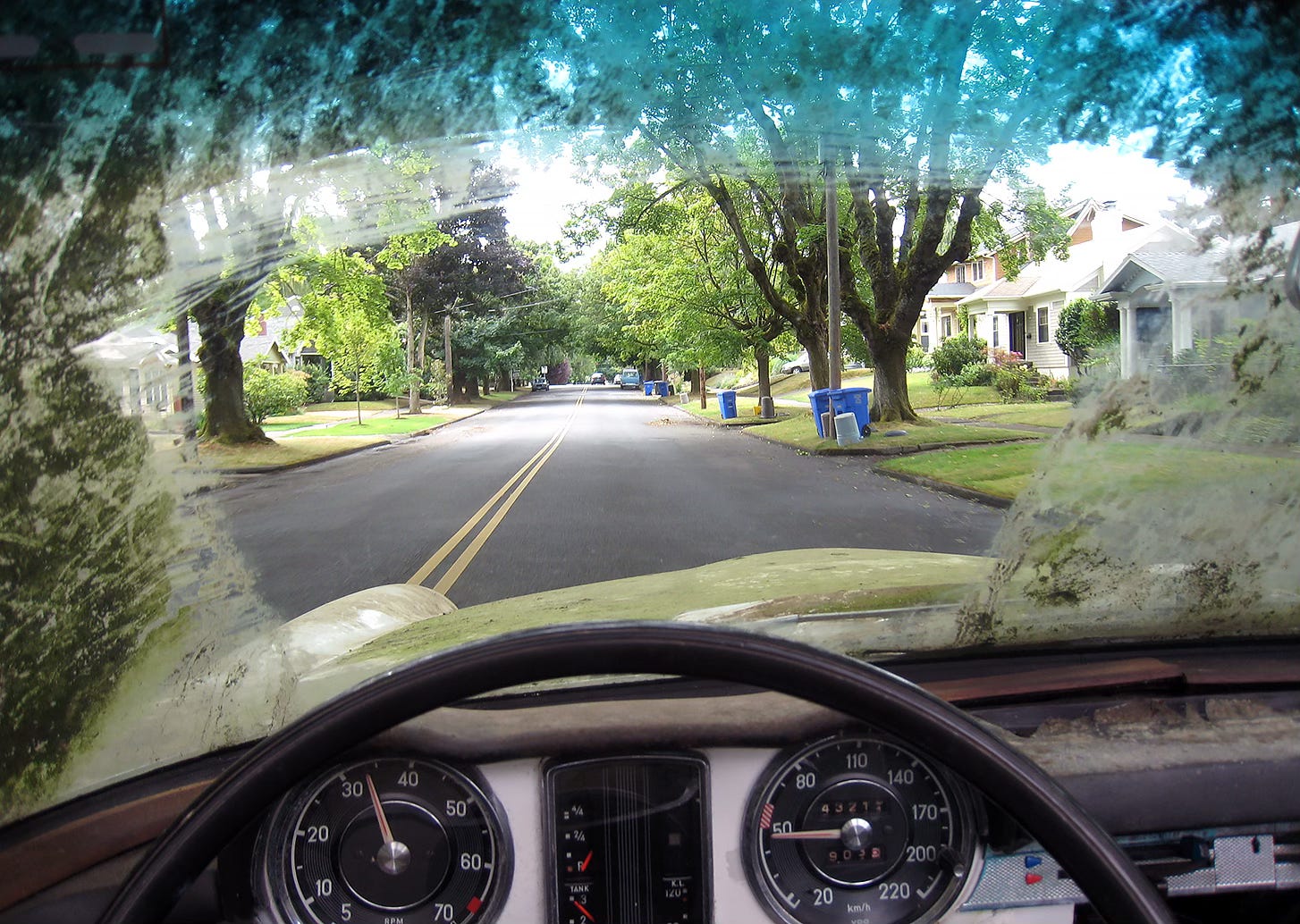
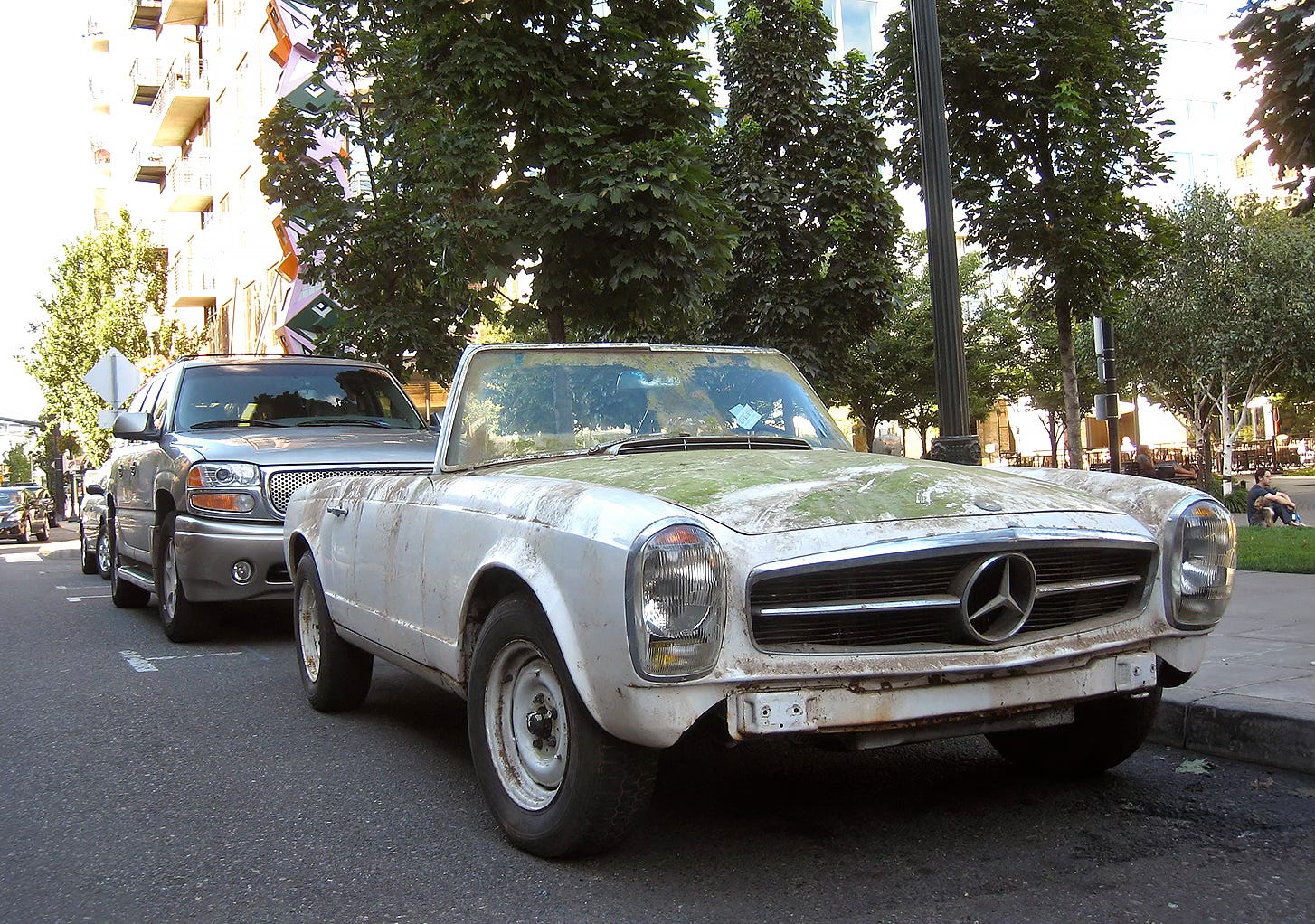
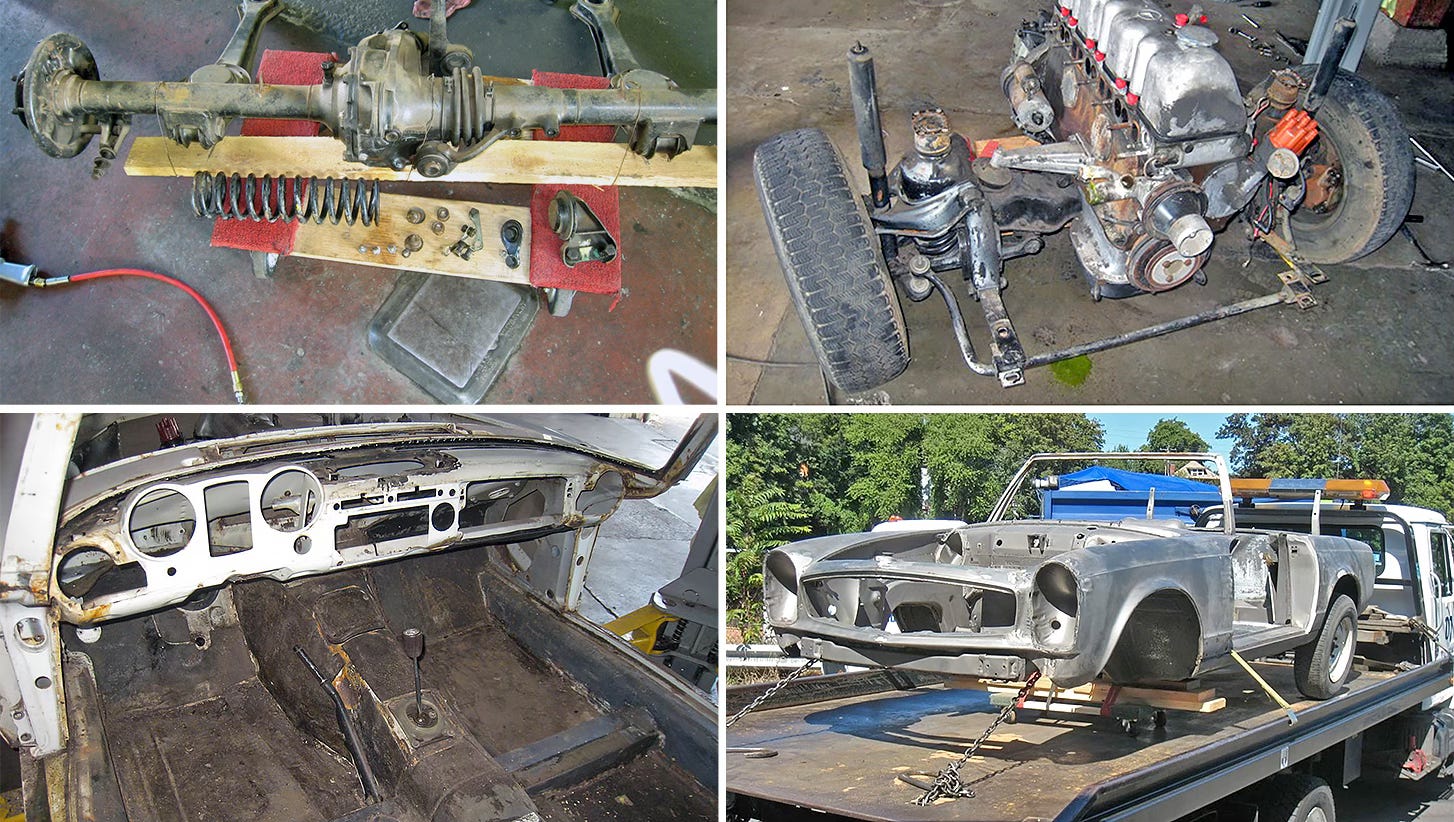
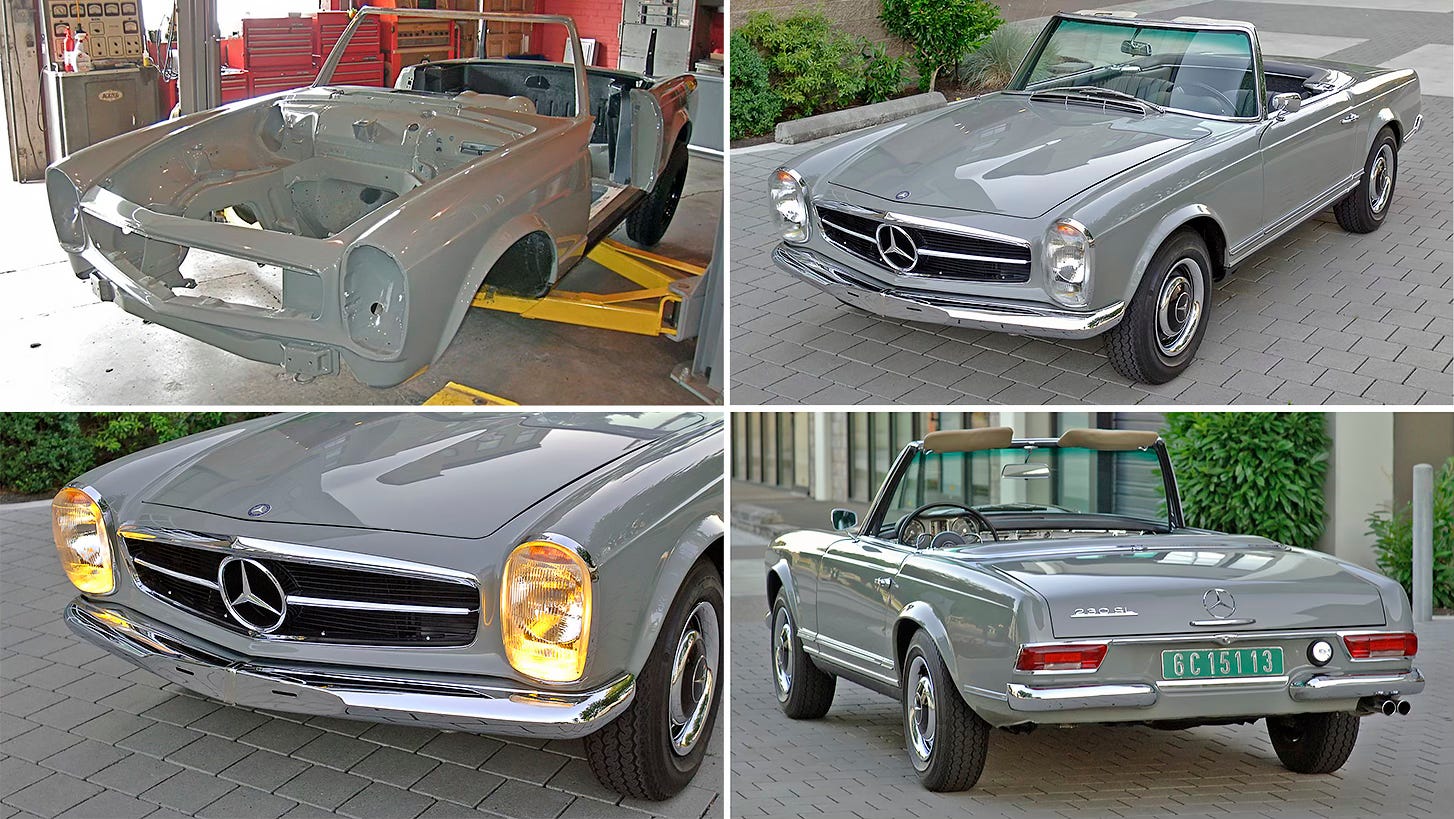

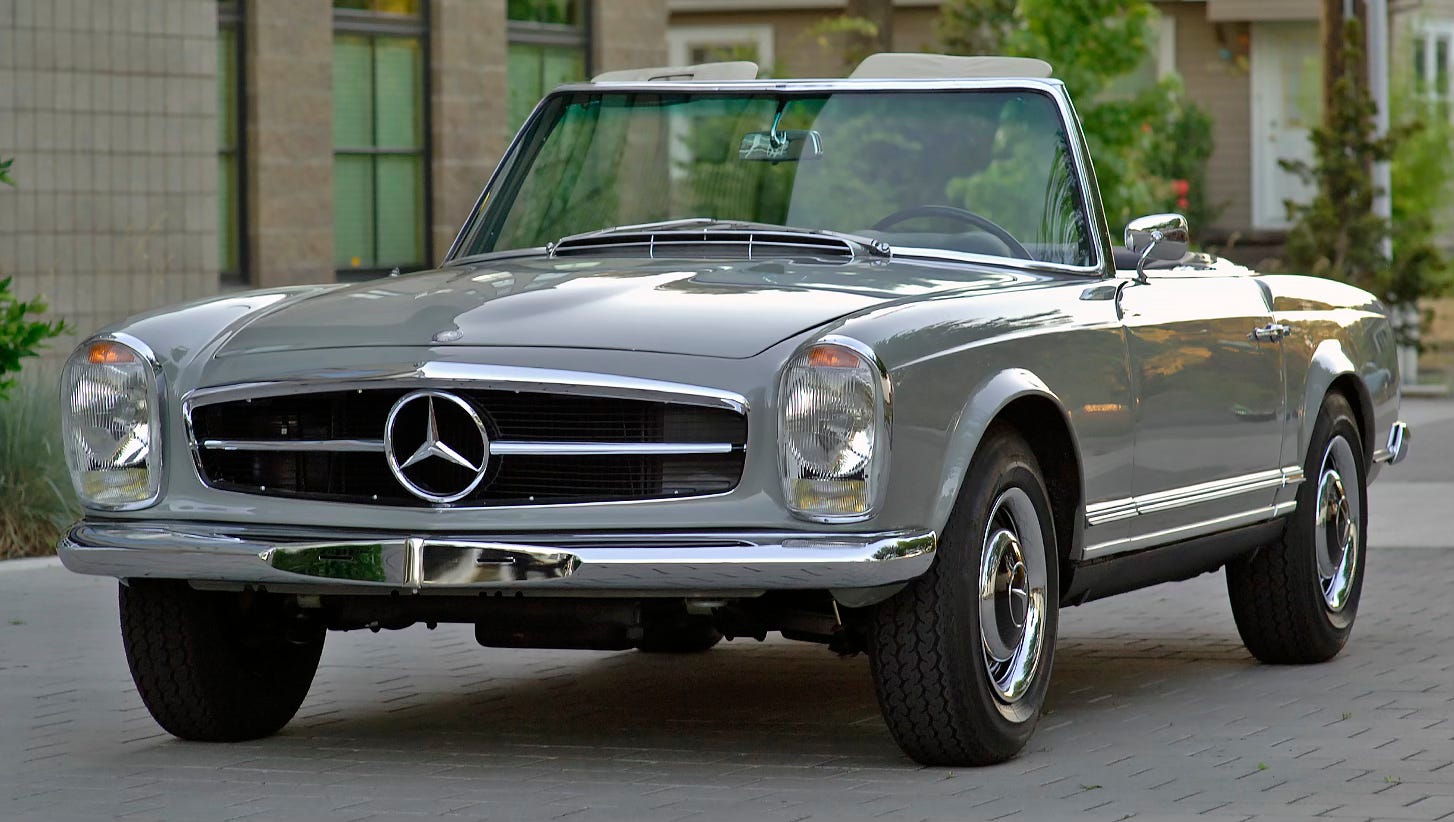
Great story. Wish I'd been around to see it!
Love the green paint. Nice work all around.